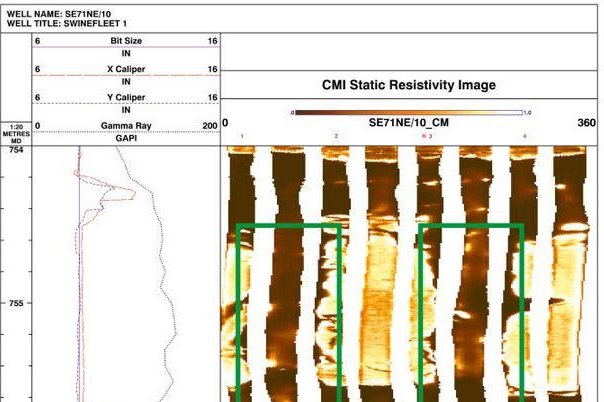British Geological Survey recommends new imaging techniques to be conducted before hydraulic fracturing in an effort to reduce the chance of seismic activity. Image courtesy of BGS.
LONDON, March 1 (UPI) -- The British Geological Survey said Tuesday it's uncovered data that could help address concerns about seismic activity associated with hydraulic fracturing.
BGS last year took the lead in a consortium tasked with a baseline environmental survey in Yorkshire after Third Energy U.K. Gas Ltd. submitted an application to use hydraulic fracturing, known also as fracking, at one well site.
Though in its infancy, the drilling practice has been controversial at least since seismic activity was linked to fracking near Blackpool along the western coast of England in 2011. BGS said it overhauled its data to determine where in the geology the integrity of wells may be compromised and potentially lead to increased seismicity.
The authors of a BGS study published in the peer-reviewed journal, Marine and Petroleum Geology, recommend the use of high-resolution imaging as a standard survey technique prior to any hydraulic fracturing operations in the country.
"This research is crucial to the regulators and the oil and gas industry as it is an easily applicable technique that can highlight parts of boreholes that may contain evidence of stress that is already present in rocks before fracking," Mike Stephenson, director of science and technology at the BGS, said in a statement.
Three tremors of a magnitude-2.9 or less were recorded in Oklahoma in the last 24 hours. The U.S. Geological Survey reported last year the increase in seismic activity in Oklahoma since 2009 may be in part related to activity associated with shale oil and gas production.
BGS already started environmental surveys in Lancashire, where shale pioneer Cuadrilla Resources aims to explore for natural gas using hydraulic fracturing. Cuadrilla was the target of widespread protests that grew out of its early fracking campaign in the region.
BGS estimated shale basins in the country may hold more than 1.3 quadrillion cubic feet of natural gas, a level the government said could help an economy with natural gas imports on pace to increase from 45 percent of demand in 2011 to 76 percent by 2030.















